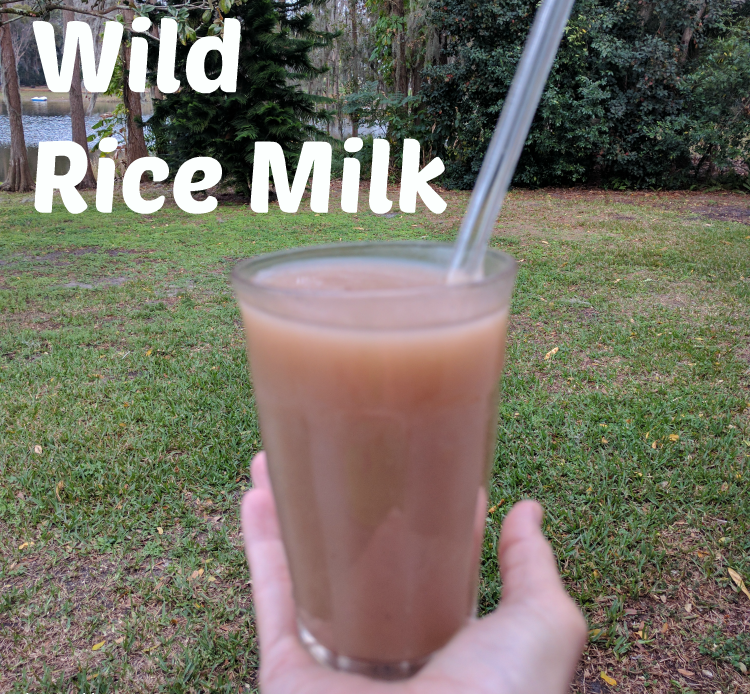 One of the biggest problems with rice milk as a milk substitute is that it is basically a glassful of carbs. There is little to no redeeming nutritional value including a hugely imbalanced macronutrient profile. This means that there is no fat and little protein to balance out the high carbohydrate content.
One of the biggest problems with rice milk as a milk substitute is that it is basically a glassful of carbs. There is little to no redeeming nutritional value including a hugely imbalanced macronutrient profile. This means that there is no fat and little protein to balance out the high carbohydrate content.
For this reason, commercial rice milk is artificially fortified to make the nutrition label acceptable to the FDA and consumers. Synthetic vitamins are added that cause more harm than good. The inclusion of rancid polyunsaturated oils adds the burden of free radicals and inflammatory omega-6 fats.
Unfortunately, without exception, commercial rice milk is to be avoided including those certified organic. The lame attempts by food manufacturers to make this traditional beverage “healthy”, in fact, make it far worse.
I examined every single brand of rice milk at the healthfood store. To my dismay, they were all unacceptable for human consumption especially for children! All contained cheap vegetable oil and/or synthetically derived vitamins with vitamin A palmitate and vitamin D2 the worst of the bunch. Some brands included dangerous additives such as carrageenan. They were all nearly devoid of any protein value with a pitiful 1 gram per serving.
Incidentally, synthetic vitamin D2 is not going to protect you from vitamin D deficiency symptoms. On top of that, the stuff is toxic. It is made by irradiating fungus and plant matter (1).
Add the risk of arsenic in paddy grown brown or white rice to the mix. All up, it is easy to conclude that rice milk is a beverage that simply should not be consumed.
This assumption would be hasty, as it is possible to enjoy delicious and healthy rice milk. Let’s think outside the box on this one!
Rice Milk Made with Wild Rice
The simple rice milk recipe below uses nutritionally superior wild rice instead of brown. It employs soaking versus sprouting or fermenting to render the rice easily digestible. As such, there is no slightly sour taste which is off-putting for some. The result is mildly sweet, creamy and satisfying.
Wild rice is naturally much higher in minerals and has double the protein of brown rice. The slightly nutty flavor adds a pleasant taste to the beverage reminiscent of traditional almond milk.
The traditional Ayurvedic remedy known as rice water is also more nutritious when made with wild rice.
This homemade rice milk recipe is a nutritious choice for those allergic to dairy and nut milks who perhaps do not tolerate coconut milk either. It is delicious on its own served cold or blended into a smoothie.
You may use sprouted red rice instead of soaked wild rice to save a step and proceed directly to cooking if desired. While more convenient, it won’t have quite as much nutritional benefit as heirloom wild rice.
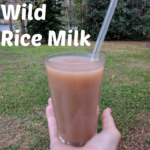
Wild Rice Milk Recipe
This creamy rice milk uses wild rice which adds more nutrition and eliminates the risk of arsenic, synthetic vitamins, and cheap fat found in store brands.
Ingredients
- 8 cups filtered water
- 1/2 cup wild rice
- 1 Tbsp avocado oil
- 3 Tbsp collagen peptides
- 1 tsp sea salt
- 2 tsp vanilla extract
- 3-5 drops liquid stevia extract optional
Instructions
-
Place wild rice in a large bowl. Add enough filtered water to cover. Stir in sea salt. Leave on the counter uncovered for 7-8 hours or overnight.
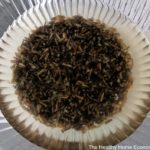
-
Drain wild rice and discard soaking water. Rinse and drain again.
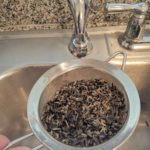
-
Place wild rice and 8 cups filtered water in a pot or slow cooker (I use a VitaClay). Bring to a boil and then turn down heat to simmer with lid on for 2-3 hours or until rice is soft and mushy.
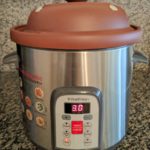
-
Leave wild rice and water in the pot or slow cooker and blend thoroughly with a handheld blender.
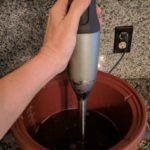
-
If a very smooth rice milk is desired, strain out wild rice hulls. If slight texture to the rice milk is acceptable, do not strain.
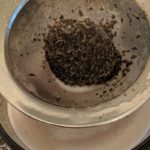
-
Add hydrolyzed collagen peptides, avocado oil, vanilla extract and optional stevia extract. Blend once more with the handheld blender.
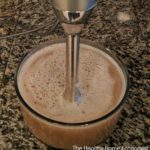
-
Cool to room temperature and then refrigerate. Wild rice milk will last 4-5 days in the refrigerator. It also freezes well for later use.
-
Serve wild rice milk cold on its own or blended into smoothie of choice.
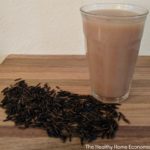
Recipe Notes
Use of hydrolyzed collagen peptides also referred to as collagen hydrolysate adds a healthy source of protein to the wild rice milk.
Please do not substitute with protein powder!
This rice milk recipe has 6 grams of protein per serving and 3.5 grams of fat (2.5 g monounsaturated, .5 g saturated, and .5 g polyunsaturated).








I have not tried this yet but wondering if all the ingredients are necessary? It seems like a lot of stuff. I would guess the nutritional difference between wild and brown rice is due to the fact that wild rice is not rice at all, it is grass. It does not have to be cooked and can be eaten after soaking only.
Hi!
What is a serving size of the wild rice milk? How much calcium does it contain?
I just made this recipe with a few changes. In place of avocado oil (didn’t have any on hand), I use about a 4th of a cup of Organic Forest Coconut Milk (IMO the best canned coconut milk), maple syrup instead of stevia, and actually ended up adding some mint leaves. I have a countertop herb garden, so I just plucked a few leaves of the mint plant, shredded them and let them soak in the glass of rice milk. The slight hint of mint made it taste SO GOOD. Come to think of it I totally forgot to add the salt. Oh well, it still tasted great.
Hi, just to make sure this alternative to traditional milks can work for an one year old having the same benefits of the other ones? I saw contains protein and fat but was wondering what about vitamins
Hey Sarah! First, I wanted to say THANK YOU for your work- It has completely changed my life around. Sticking to a holistic diet based on your blog can be challenging at times, like when all my friends want to go to Starbucks to guzzle artificial colors and preservatives, but it has payed off. I feel so much more energized than I did five years ago, even though I was younger haha! As the owner of an independent bookshop in Florida, I can say your books are one of our best sellers. I was wondering if you could maybe stop by one day in the month of March since you live around here. The month of March is our “Holistic Diet Awareness” month, and we are having a sale on all books that promote a healthy, holistic diet and lifestyle, including yours! We would appreciate it so much if you could possibly stop by the shop one day and do a booksigning? At your discrepancy of course. I don’t know if this is the right way to contact you, I can’t communicate through Facebook, etc. because I am not on social media. If you are interested please contact me at [email protected]. Thank you so much Sarah for your dedication to health and wellbeing.
I would be delighted! I will send you an email now 🙂
Hi Sarah. Being a Muslim I can only use halal products so unfortunately I cannot buy the collagen products online and there are no halal alternatives… what can I add in place? I make bone broth at home from organic chicken carcasses. Would I add that and how much? My dear daughter needs a milk alternative at 16 months old she is a poor eater and only drinks raw goat milk which we think she may be allergic to. In the process of attempting to heal
Her gut I am looking for a healthy alternative. Thank you
Hi Sab, there aren’t any alternatives to collagen or gelatin that I would feel comfortable recommending. Just leave it out if you cannot find one that is acceptable and just be sure your daughter is getting good quality protein from other sources. The good news is that wild rice milk has double the protein of regular rice milk made with brown rice, so that helps somewhat.
This wild rice milk turned out fabulous! Thank you for posting this recipe!!! My daughter who is allergic to nearly all alternative milks out there, guzzled it down. She also liked the slightly mauve color, ha ha.
Hi Sarah! Your VitaClay Pot looks very interesting. I’ve been trying to decide on getting an InstaPot – could you tell us the difference between the two? Thanks as always!
Here’s a post I wrote about the vita-clay back in 2015 when I started cooking with them (I actually own 2 of them now, I use them so much!). https://www.thehealthyhomeeconomist.com/clay-pots-safe-slow-cooking/
The instapot is stainless steel, so that was a showstopper for me right there. I wanted something that I could cook everything in, including acidic foods such as tomato based sauces and broth with added vinegar. Stainless steel leeches nickel and chromium into food if acidic foods are cooked in it. An upcoming post will explore that in more detail.
Hi there – thank you so much for this post and for all your other posts – I am a big fan! I use the Great Lakes gelatine powder regularly but have never used the collagen powder you mention in this recipe. Are they similar products? Many thanks
Great Lakes is also a quality product. I used it for years before switching to the Vital Proteins one linked to in the recipe. Use whichever one you prefer. This article explains the difference between gelatin and collagen peptides.
https://www.thehealthyhomeeconomist.com/gelatin-and-collagen-hydrolysate-whats-the-difference/
I hope you enjoy the rice milk … 🙂